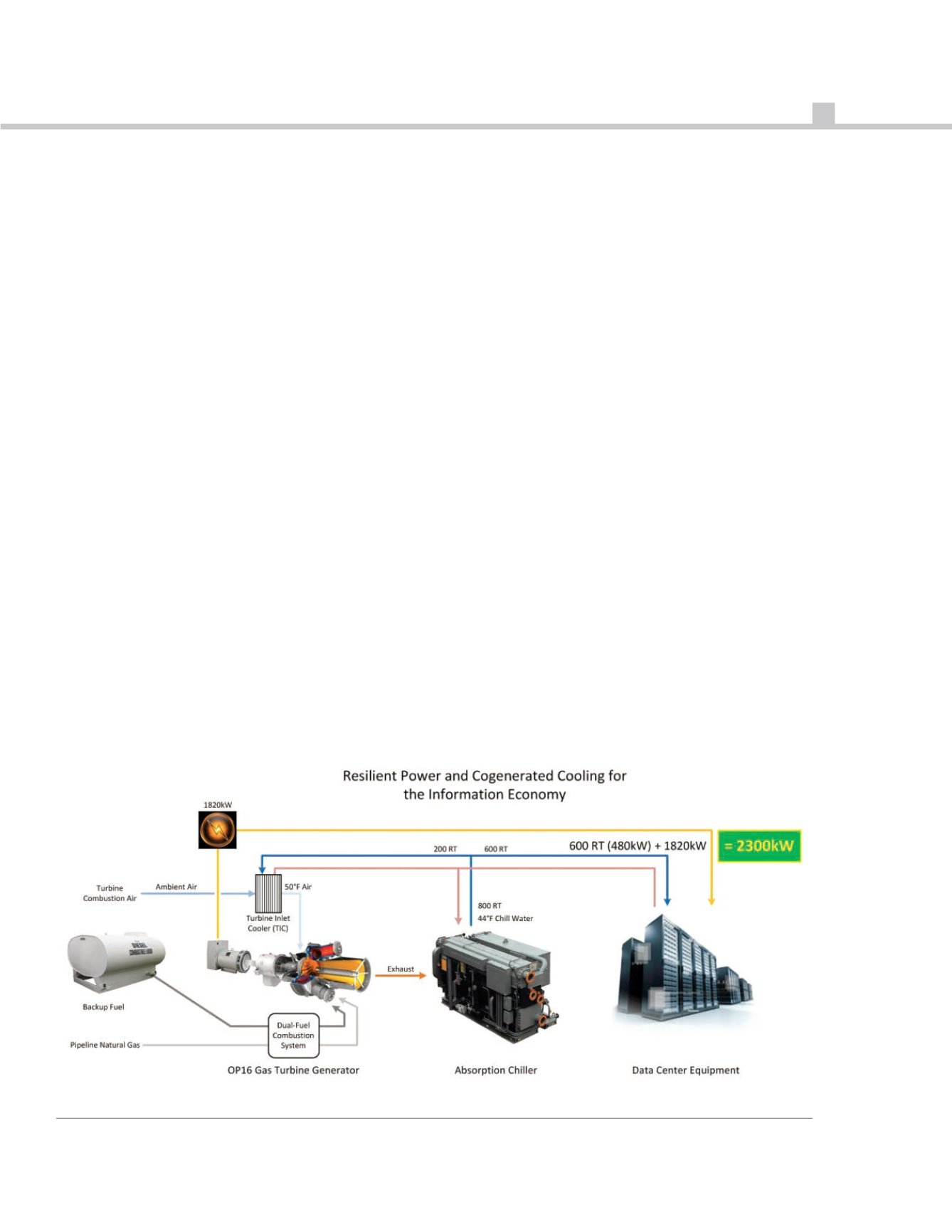

77
WWW.7X24EXCHANGE.ORGBrent Voelker is the Director of Sales for Kinsley Energy Systems.
He can be reached at
[email protected].Coupled with an absorption
chiller, a single turbine generator
designed for distributed
cogeneration displaces 2300kW
of electric power from the grid: it
produces 1820kWe to power
electronic equipment plus 600
Tons of Refrigeration (RT), which
would normally draw 480kW
when electric chillers are
employed. Further, substantial
additional energy is available in
the turbine exhaust to power
redundant chillers should the
data center require it: total
exhaust energy from one 1.8MW
turbine is sufficient to produce
1560 RT. Data centers typically
employ backup generators in 2-
2.5MW increments, so the gas
turbine with cogenerated cooling
will perfectly support a typical
facility strategy of modular
incremental expansion. But
unlike backup diesel generators,
the gas-fired turbine will provide
its own additional return on
investment by reducing the cost
of energy for the facility during
normal operation.
Fuel control should be tuned for
a six-second transition time for
switchover from 100% gas to
100% diesel or from diesel back
to gas. A small receiver in the
gas line or a run of large-
diameter pipe ensures adequate
gas pressure through the
switching transient after the gas
supply is lost. The turbine will
require 14,000 gallons of U.S.
conventional diesel to operate
continuously for 72 hours in the
event of a crisis. During normal
operation, an automated
maintenance action will switch
from gas to diesel and perform
diagnostic checks to periodically
demonstrate reliability of
operation on the backup fuel.
Total time operating on diesel for
these routine checks will be less
than 15 hours over the course of
each year.
The small gas turbine generator
represents a sea change for
power in the data center
industry. While some large data
centers are accompanied by
enormous investments in
redundant high voltage power
lines or independent gas lines,
these strategies remain
vulnerable to system-wide
disruptions. At a fraction of the
cost, the small gas turbine can
automatically and literally
transform the data center into an
island unto itself, fully insulated
from electric grid and gas supply
outages. And in addition to the
avoided cost of UPS and backup
diesel generators, a gas turbine
with cogenerated cooling will
provide exceptional value during
normal operation by reducing
energy costs while continuously
demonstrating the availability of
reliable power to carry the center
through times of emergency.

















